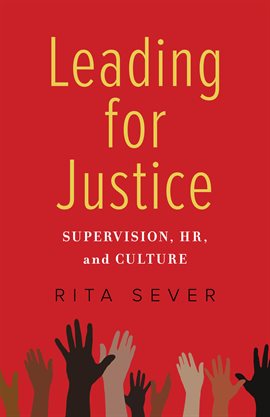 Leading for Justice by Rita Sever is well worth reading for anyone who supervises or manages others at a nonprofit. She has put so many nuggets of wisdom into this book. You will get a wide variety of great ideas on how to work with people more effectively, efficiently, and most importantly, in a way that they feel valued and heard.
Leading for Justice by Rita Sever is well worth reading for anyone who supervises or manages others at a nonprofit. She has put so many nuggets of wisdom into this book. You will get a wide variety of great ideas on how to work with people more effectively, efficiently, and most importantly, in a way that they feel valued and heard.
She addresses every relevant topic for supervising people, including supervising remote staff, dealing with burnout, holding staff accountable, and much more. Some of her advice covers things I’ve learned the hard way, other suggestions were completely new to me. I appreciated her emphasis on making sure you are holding regular one-on-one meetings with staff to make sure everyone feels heard and to clear up problems before they become big issues.
She also shared a lot of good information on the role of HR, at what point an organization needs an HR professional, or at least someone who has that duty formally added to their position. While HR professionals can sometimes emphasize potential legal consequences to actions more than staff want to hear, they are a valuable partner in the health of an organization and the happiness of its staff. HR is someone who is not the boss but is someone people can go to with problems. They are looking out for employees’ well-being and helping train supervisors. All of these important roles are vital to an organization’s success.
Sever weaves in a focus on justice throughout the whole book. She includes many lessons that she has learned along the way as a nonprofit staff member, leader, and consultant. This includes ways to see your own privilege and questions to ask yourself. She also talks about the need to understand the unwritten rules in your workplace so you can examine them more closely and how they might impact those who aren’t part of the group in power.
Leading for Justice is available on Hoopla or at your favorite bookstore.
 The Little Book of Boards: A Board Member’s Handbook for Small (and Very Small) Nonprofits
The Little Book of Boards: A Board Member’s Handbook for Small (and Very Small) Nonprofits

 Leading for Justice by Rita Sever is well worth reading for anyone who supervises or manages others at a nonprofit. She has put so many nuggets of wisdom into this book. You will get a wide variety of great ideas on how to work with people more effectively, efficiently, and most importantly, in a way that they feel valued and heard.
Leading for Justice by Rita Sever is well worth reading for anyone who supervises or manages others at a nonprofit. She has put so many nuggets of wisdom into this book. You will get a wide variety of great ideas on how to work with people more effectively, efficiently, and most importantly, in a way that they feel valued and heard. Becoming a strong executive director takes a wide range of skills. No one can be strong in every single area, of course, but you do need to have the basics down in each and know where you can improve. The skills listed below are all ones you can learn with practice.
Becoming a strong executive director takes a wide range of skills. No one can be strong in every single area, of course, but you do need to have the basics down in each and know where you can improve. The skills listed below are all ones you can learn with practice.